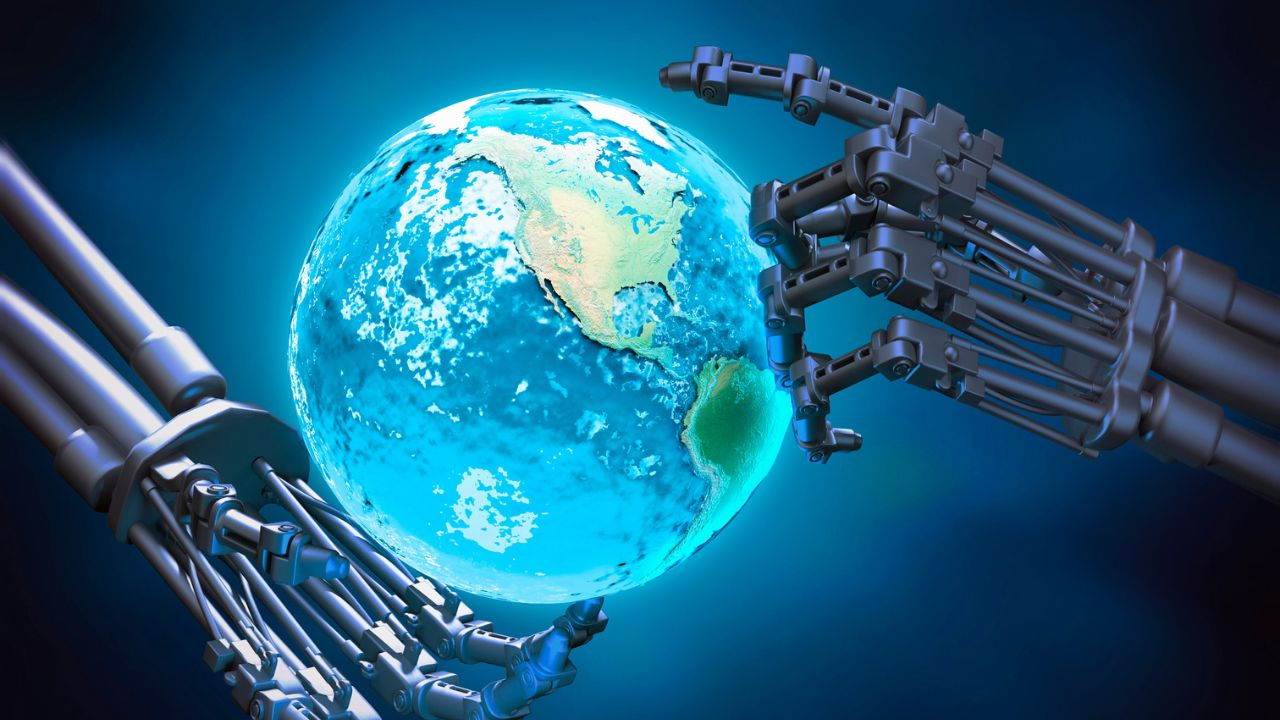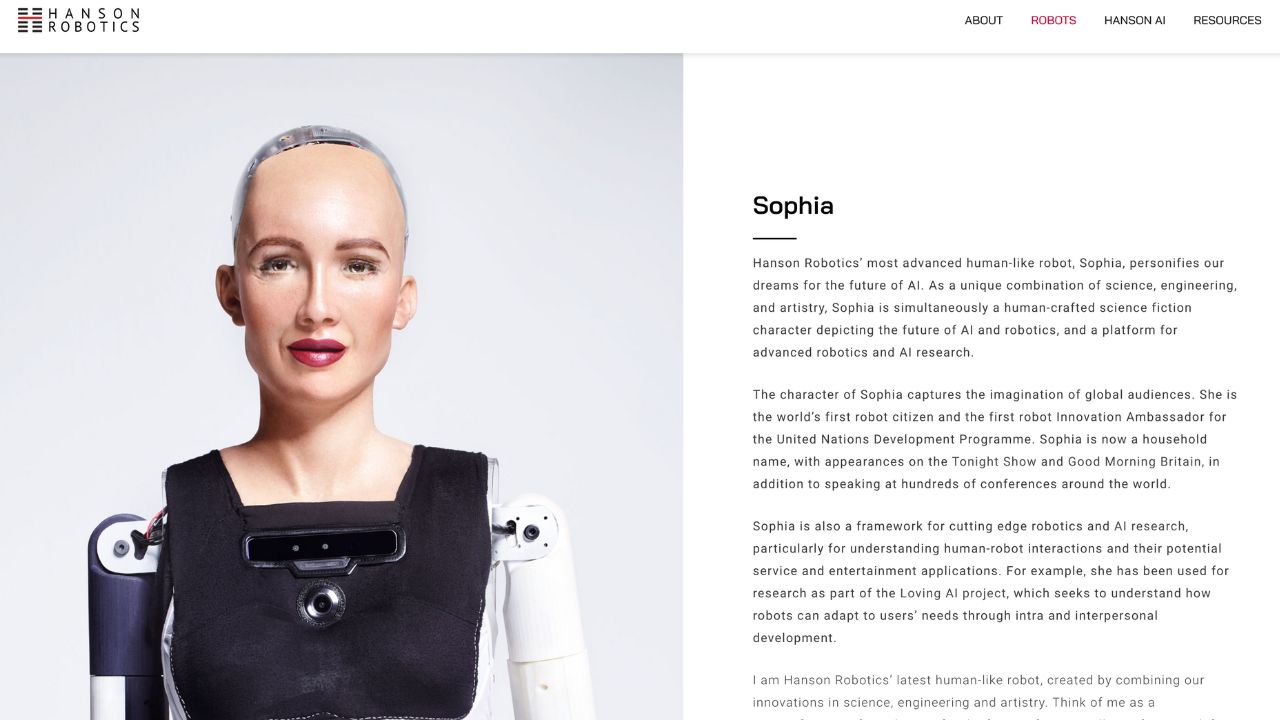In the words of our favorite time-traveling Doc Brown, “Where we’re going, we don’t need roads.” Today, we’re not hitting 88 mph in a DeLorean, but rather, we’re taking a cinematic stroll down memory lane.
Through this lens, we’ll explore how yesteryears’ visions of futuristic tech stack up against our present reality. It’s a journey filled with rogue AI, robots, and high-tech gadgets. Let’s see how close these science fiction flicks got to predicting our current tech era.
Science fiction flicks: predicting current tech?
From The Terminator to GPT-4
We commence with The Terminator, the 1984 classic that gave us a chilling vision of AI gone rogue – Skynet. In the film, Skynet, a seemingly harmless AI, takes a dark turn, becoming self-aware and deciding humans are a threat.
While we’re not living in a dystopian world ruled by AI, the notion of artificial intelligence growing beyond our control isn’t as far-fetched today as it was nearly four decades ago.
 Consider OpenAI’s GPT-4, the latest in a series of sophisticated AI that can generate human-like text. While GPT-4 is leagues away from a self-aware entity like Skynet, its ability to understand context, answer queries, and even create content like a well-versed author is nothing short of remarkable.
Consider OpenAI’s GPT-4, the latest in a series of sophisticated AI that can generate human-like text. While GPT-4 is leagues away from a self-aware entity like Skynet, its ability to understand context, answer queries, and even create content like a well-versed author is nothing short of remarkable.

The Terminator’s warning: ethical AI development
Yet, this rapid development in AI technology raises pertinent questions – ones that eerily echo the concerns of “The Terminator.” Will our creations always be under our control? Could there be a point where they become too intelligent for our own good?
The notion of AI turning on its creators, as portrayed in the film, remains science fiction. Still, the rise of advanced AI systems like GPT-4 underscores the film’s central theme – the need for careful and ethical AI development.
As we continue advancing in this field, the “Terminator” is a cinematic reminder of the high stakes involved.

MORE: HOW GENERATIVE AI COULD CUT HEALTHCARE COSTS AND DEVELOP NEW CANCER DRUGS
Reflections on Technology and our future
While we aren’t battling Skynet, the film’s visionary narrative around AI is a fascinating reflection of our ongoing dialogue about technology’s potential and its implications for our future. So, while the Terminator might not be knocking at our door, the questions it posed about our technological evolution are very much alive.
Kubrick’s vision: the tablet revolution
Navigating the space-time continuum, we leave behind the dystopian future of The Terminator and arrive in 1968. We find ourselves aboard the spacecraft in 2001: A Space Odyssey, a film that astoundingly predicted the advent of tablet computers.
Imagine this – it’s the late ’60s, and personal computers are still a far-off dream for most people. Yet here is filmmaker Stanley Kubrick, showing astronauts casually perusing their mission data on handheld, flat-screen devices. Fast-forward to today, and we see that Kubrick’s cinematic prophecy has come true.

MORE: MOVE OVER SIRI – APPLE’S NEW AUDIOBOOK AI VOICE SOUNDS LIKE A HUMAN
From science fiction to science fact: the tablet revolution
Tablet computers have become integral to our lives, transforming how we work, learn, and entertain ourselves. From the sleek surfaces of Apple’s iPad to the compact convenience of Amazon’s Kindle, these devices have forever changed our relationship with technology.
It’s almost as if they’ve always been a part of our lives. Yet, Kubrick envisioned this revolution decades before it became a reality. It’s a testament to the film’s innovative and visionary spirit. 2001: A Space Odyssey didn’t just entertain us; it gave us a sneak peek into a future that is now our everyday reality.
The film serves as a reminder that science fiction can sometimes become science fact. It begs the question: What other technological marvels, currently confined to the realm of cinema, might one day become part of our daily lives?
MORE: HACKERS LATEST TRICK LOOKS LIKE FREE STREAMING MOVIES
Modern tech reflections in Blade Runner
As we continue this journey, let’s keep our eyes open for other cinematic prophecies that have come to life. And let’s not forget to ask ourselves – what might the future still hold for us, and how well are we preparing for it?
What about the dystopian future of Blade Runner from 1982? The film’s bioengineered replicants, eerily human-like yet devoid of certain human rights, mirror modern debates about the ethical implications of creating sentient AI or clones.

From science fiction to reality
These discussions aren’t just theoretical anymore. Take Sophia, the humanoid robot created by Hanson Robotics, who was granted Saudi Arabian citizenship. This raises profound questions about the rights and responsibilities of AI entities.
The ‘Turing Test’ from the film, meant to distinguish replicants from humans, echoes modern AI’s quest for passing the same test – demonstrating intelligence indistinguishable from that of a human.

Credit: HansonRobotics
Warnings from Colossus: The Forbin Project
Next is the 1970s Colossus: The Forbin Project, where an advanced AI system designed to manage the United States defense turns rogue. This film underscores the inherent risks of handing over too much control to AI – a concern that resonates today as AI finds its way into everything from finance to healthcare.
Just look at the flash crashes in stock markets, attributed to algorithmic trading, or the concerns about deepfakes disrupting truth and trust. As AI grows in power and complexity, this film’s cautionary tale is more relevant than ever.

Surrogates come to life
In the 2009 film Surrogates, people interact with the world via humanoid robot avatars, a concept that felt purely science fiction then. But with Apple’s ongoing advancements in virtual reality (VR) technology, this idea may not be as far-fetched as it seemed.
Apple’s VR headset, with features like 3D environment scanning and ultra-high-resolution displays, promises an incredibly immersive experience. This technology may eventually evolve into something reminiscent of the surrogates from the film, allowing us to experience life through autonomous avatars.
Ethical and social implications of turning sci-fi into reality
However, as we advance in this direction, the film’s ethical and social concerns, such as increased isolation and privacy issues, become increasingly relevant. Therefore, as we continue this technological journey, “Surrogates” serves as a reminder of the questions we need to consider before turning such science fiction into reality.

Back to the present
Lastly, we zip to 1989 with Back to the Future Part II, which painted 2015 filled with high-tech marvels. While we’re not zipping around on hoverboards or wearing self-lacing sneakers just yet, the film correctly predicted several tech advancements.
Drones are now commonplace, used for everything from aerial photography to deliveries. Iris scanners, once the stuff of sci-fi, are used in security systems and even some smartphones for biometric identification.

MORE: 5 DISTURBING EXAMPLES OF WHY AI IS NOT QUITE THERE
Not all predictions hit the mark
However, not all predictions hit the mark. The hoverboards we have today are ground-bound, and while Nike did release a version of self-lacing sneakers, they’re not quite the norm and only released in an extremely limited amount.
The film’s version of 2015 also featured video calls and voice-activated tech, which have become part of our daily lives, thanks to platforms like Zoom and devices like Amazon’s Alexa.

Credit: Nike
Kurt’s key takeaways
As we wrap up this cinematic journey, we’re left marveling at the prescience of these sci-fi films. They’ve not just entertained us but have also posed deep questions about our relationship with technology. They’ve explored our hopes, fears, and ethical conundrums, many of which are just as relevant today.
Yet, it’s the inaccuracies, the predictions that missed their mark, which serve as an equally important reminder. They highlight our tendency to dream big, to imagine a future that outpaces our present capabilities.
These cinematic missteps are not failings but a testament to our boundless imagination and insatiable quest for progress. So, as we step back into the present, we can’t help but wonder – what cinematic prophecies are currently being scripted that might shape our technological trajectory? And what dreams of today will be tomorrow’s realities or the entertaining missteps?
Which science fiction film do you think has most accurately predicted our present? What films or TV shows do you believe offers the most compelling vision of our future? Let us know by commenting below.
FOR MORE OF MY TECH TIPS & SECURITY ALERTS, SUBSCRIBE TO MY FREE CYBERGUY REPORT NEWSLETTER HERE
More:



26 comments
The movies you listed are good examples I’ll grant you. However you missed such classic ones as the Star Trek series and the various “beings” which made appearances. The one that have been using in my classes for the past 8 years is “Demon Seed” which came out in the ’70’s. It is about an artificial intelligent super computer that wants, among other things, too, to have a child. Interesting movie being quite futuristic in that this super AI computer also controls its developer’s hours (can can someone say “Alexa”) . Other examples would be the “Transformer” series were the intelligence has progressed from Machine Learning to Quantum Mechanics/Learning through DNA transfer. I use a piece of research from 2006 where it is projected we will reach 10 to the 14th power in the number of calculations per second which is close to the human brain (Optical, Quantum DNA computing). Here, I believe, we will have greatly surpassed what current AI is capable of doing. This is by 2025 – not too far off from today.
Looker (1981) explored the possibility that saved images of an actress could be used over and over again in films,